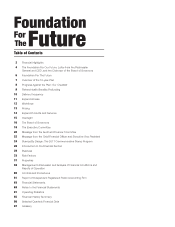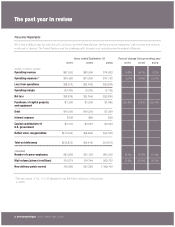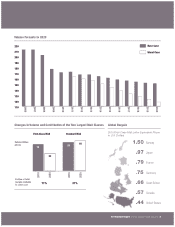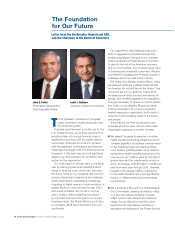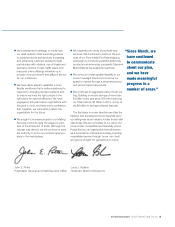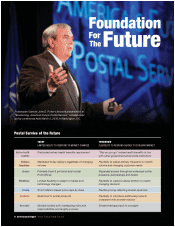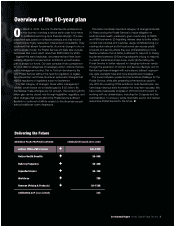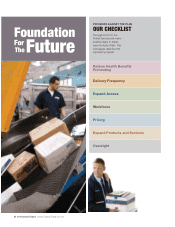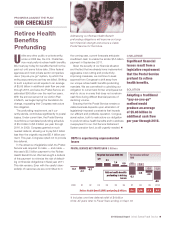US Postal Service 2010 Annual Report Download - page 9
Download and view the complete annual report
Please find page 9 of the 2010 US Postal Service annual report below. You can navigate through the pages in the report by either clicking on the pages listed below, or by using the keyword search tool below to find specific information within the annual report.
2010 Annual Report United States Postal Service 7
BUSINESS PLAN: PROPOSED ACTIONS CUMULATIVE VALUE 2010–2020
Actions Within USPS Control + $80–123B
Retiree Health Benefi ts + $0–50B
Delivery Frequency + $0–40B
Expanded Access + $0–10B
Workforce + TBD
Revenue (Pricing & Products) + $0–158B
REMAINING GAP (from $238B) $0B
On March 2, 2010, the U.S. Postal Service embarked on
a new journey, unveiling a robust action plan for a return
to profi tability and long-term fi nancial strength. The plan
presented was based on extensive analysis and mail volume
projections by highly respected, independent consultants. They
confi rmed that absent fundamental, structural change to its cur-
rent business model, the Postal Service will likely face cumula-
tive losses that could reach more than $238 billion by 2020.
Against this static backdrop, we presented and have been
working diligently to implement an ambitious, yet achievable,
plan to shape our future. Our plan consists of two complemen-
tary but distinct categories of necessary action: actions that are
within management control, that is, that can be taken by the
U.S. Postal Service without the need for regulatory or legisla-
tive intervention; and those structural, systematic changes that
require regulatory or legislative action to implement.
The fi rst category of changes, those within management
control, could reduce our projected gap by $123 billion. By
themselves, these changes are not enough. The remaining $115
billion gap can be closed only through legislative, regulatory, and
labor changes that would afford the Postal Service suffi cient
fl exibility to continue to fulfi ll its mission to the American people
without additional cost to taxpayers.
This second critically important category of changes includes:
(1) Restructuring the Postal Service’s unique obligation to
prefund retiree health, particularly given overfunding of CSRS
and FERS pensions; (2) Adjusting delivery days to better refl ect
current mail volumes and customer usage; (3) Modernizing our
existing retail network so that customers can access postal
products and service where they are; (4) Establishing a more
fl exible workforce that is better positioned to respond to chang-
ing demand patterns; (5) Ensuring adequate pricing to respond
to market demand and help cover costs; (6) Permitting the
Postal Service to better respond to changing customer needs
through the expansion of product and service offerings, and (7)
Reinforcing these changes with more clearly defi ned, appropri-
ate, agile oversight roles and more streamlined processes.
The current situation presents a tremendous challenge for the
Postal Service, while also presenting a tremendous opportu-
nity. With the unveiling of this ambitious, multi-faceted plan, we
have begun laying a solid foundation for long-term success. We
have made measurable progress in 2010 and look forward to
working with our stakeholders, including the Congress and the
Administration, to ensure a viable, fi nancially sound, and market
responsive Postal Service for the future. ■
Overview of the 10-year plan
Delivering the Future



